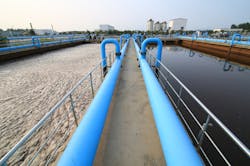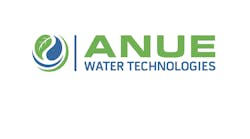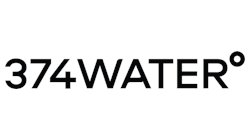Water softening is often achieved with ion exchange (IX) resin technology, but Cang Li and Steven Nicolich of Selecto Inc. write in the November 2015 issue of Water Technology that IX can be used to remove a host of contaminants as well. IX resins can effectively address disinfection byproducts (DBPs), arsenic, nitrate, perchlorate and uranium, for which new drinking water quality regulations have been introduced.
How it works
Operating in two main categories, cation and anion, contaminants including hardness and alkalinity are removed in the process through a reversible ionic interchange between a solid phase (resin beads) and liquid phase (water). Non-ionic contaminants such as benzene are not removed by the process.
Cation versus anion
Li and Nicolich note in the article that "Positively charged cation resins remove positively charged ionic water contaminants." Cation resins can be strong acid/strong cation (SAC) and weak aced/weak cation (WAC) resins. Anion resins include strong base/strong anion (SBA) and weak base/weak anion (WBA) resins. They are suitable for several water processes:
- Hardness removal — SAC removes hardness ions to soften water. SAC resin beads reduce hardness levels and increase sodium levels by removing scale-forming calcium (Ca2+) and magnesium (Mg2+) ions.
- Softening and dealkalization — With WAC, hardness, alkalinity and some total dissolved solids at the same time. WAC resin usually removes about 80 percent of temporary hardness. Water treated with WAC will be acidic because WAC resin exchanges hardness and alkalinity ions for hydrogen ions.
- Barium and radium removal — The US. Environmental Protection Agency (EPA) regulates these two divalent cations for National Primary Drinking Water Standards. They can be removed by standard SAC resin, and special types of SAC resin can enhance barium and radium removal.
Anion resins include strong base/strong anion (SBA) and weak base/weak anion (WBA) resins:
- NO3– — SBA resins removes this contaminant, but it must be regenerated early when the concentration of NO3– in the water is high.
- CIO4– — Perchlorate can be removed with selective SBA resins which are single-use and/or regenerable.
- Arsenic — SBA resins can only removed negatively charged arsenate (HASO42-), which is related to arsenic in water. Since arsenite is usually neutral in aqueous solution, pre-oxidation is necessary, then the residual must be removed.
- Total organic carbons (TOCs) — SBA resin is typically used to remove DBPs cause by TOCs that can be oxidized by secondary chlorine disinfection. These are regulated by the EPA.
- Uranium — SBA resin can remove this contaminant, usually found as anionic uranyl carbonate/sulfate complexes.
Certain resins can also be used in demineralization/deionization, dealkalization and disinfection, note Li and Nicolich.
For the full article, click here.


